Size guide for hard armor plates
Choosing the right size and protection level for your PGD hard armor plates is crucial for ensuring both comfort and safety. Our guide will help you measure yourself correctly and select the best hard armor plate for your needs.
The primary organ to be protected is the heart. Since the heart is located with its apex near the left center of the chest, you need to choose a ballistic plate wide enough to ensure complete coverage of this area for optimum protection.
Below you will find a guide on how to find the right size for a hard armor plate.
Guide: How to choose the right size hard armor plate
The most important area to protect is the vital organs, including the heart, lungs, and major blood vessels. Follow these simple steps to measure yourself correctly:
Step 1. Get a tape measure and measure your body
First you need to measure your chest width to determine the ideal width of your plate. You should stand upright and measure the width of your chest from nipple to nipple. A general guideline is, that the plate should cover at least 80% of the chest but allow free arm movement.
Next up, you need to measure your torso length. If you sit upright in a chair and measure from your clavicle (collarbone) down to approximately 1-2 inches above your navel. Now, the plate should cover your vital organs without interfering with your ability to move, bend, or sit comfortably.
Typically, plates range from 8” x 10” to 11” x 14” in size, with 10” x 12” being the most common size for adults. Furthermore you should always consider your body type. If you have a larger frame, you may need a wider plate to ensure adequate coverage. If you have a slimmer build, a more compact plate may be more comfortable while still providing protection.
Step 2. Choose the right protection level
Protection levels are determined by NIJ (National Institute of Justice) standards. The right level depends on the threats you expect to encounter.
NIJ protection levels for PGD hard armor plates:
- Level III: Protects against common rifle rounds, including 7.62x51mm NATO.
- Level III+: Provides additional protection against faster and steel-core rifle rounds.
- Level IV: Protects against armor-piercing rifle rounds, including .30-06 AP. Level 4 plates provide the highest protection.
In general you should consider the following factors:
- If you are in law enforcement or military operations, Level III+ or IV is recommended.
- If you require lightweight protection for training or low-threat environments, Level III may be sufficient.
Always check if the plate is standalone (does not require additional soft armor) or in-conjunction-with (requires additional armor for full protection).
Read more about our hard armor plates.
Step 3. Choose the right plate shape and cut
Different plate cuts offer different mobility and protection levels. Our PGD hard armor common plate shapes:
- Shooter’s cut: Provides better arm mobility, ideal for tactical use.
- SAPI (Small Arms Protective Insert) cut: Standard military cut with rounded edges for balance between protection and movement.
- ESAPI (Enhanced Small Arms Protective Insert) cut: These plates offer a higher protection at the cost of increased weight, while SAPI plates provide sufficient protection for less severe threats.
You also need to consider the plate’s curvature. The curvature of a plate plays an important role in comfort and fit. While both single-curve and multi-curve plates provide the same level of ballistic protection, they differ in ergonomics and usability.
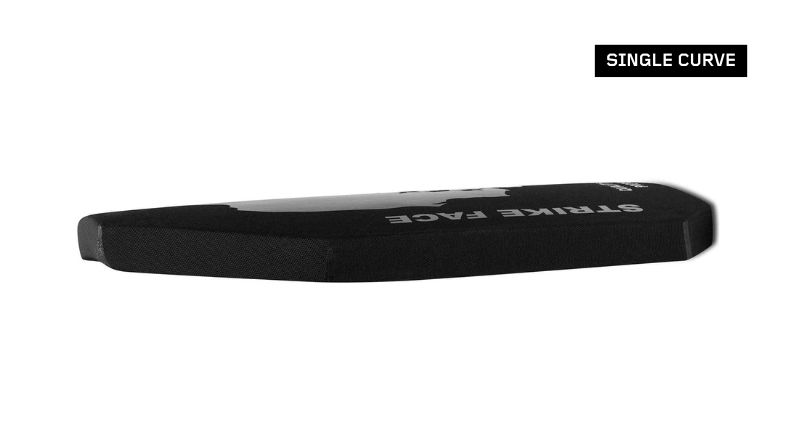
Single curve plates: These plates have a basic curvature that conforms to the general shape of the torso. They are more affordable and provide a universal fit, but may feel less comfortable for extended wear, especially for those with unique body shapes. |
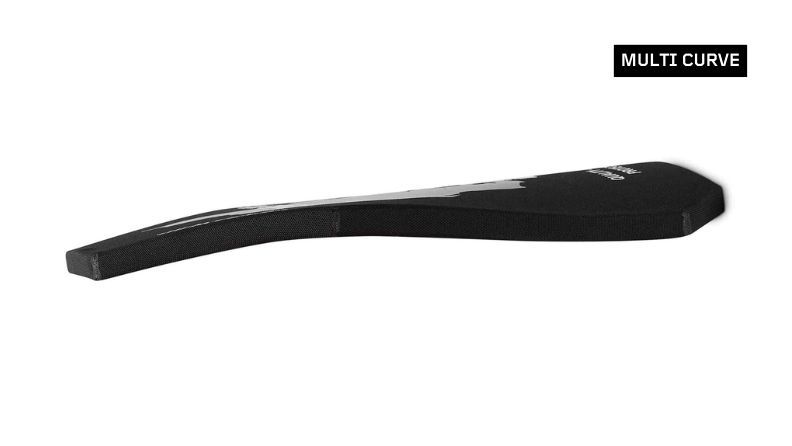
Multi curve plates: These plates are designed to mimic the natural contours of the chest and torso, providing a more comfortable and ergonomic fit. They enhance mobility and reduce pressure points, making them ideal for prolonged use. |
Below you will find an overview of available sizes for our PGD hard armor plates
You can read much more detailed information about each ballistic plate on our hard armor category page by by selecting any specific plate.
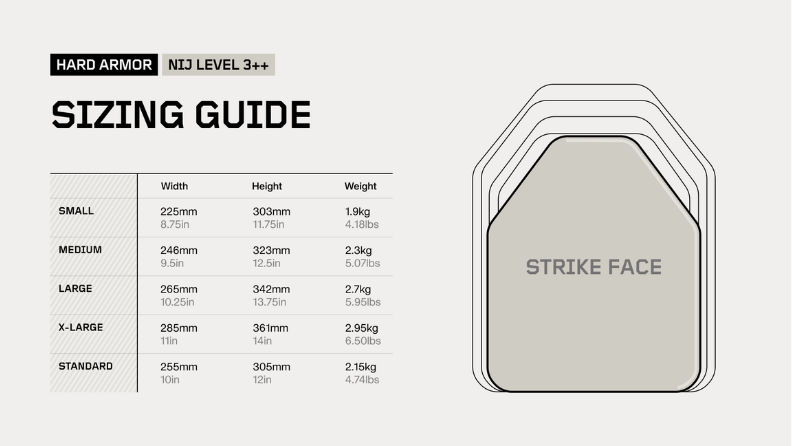 |
 |
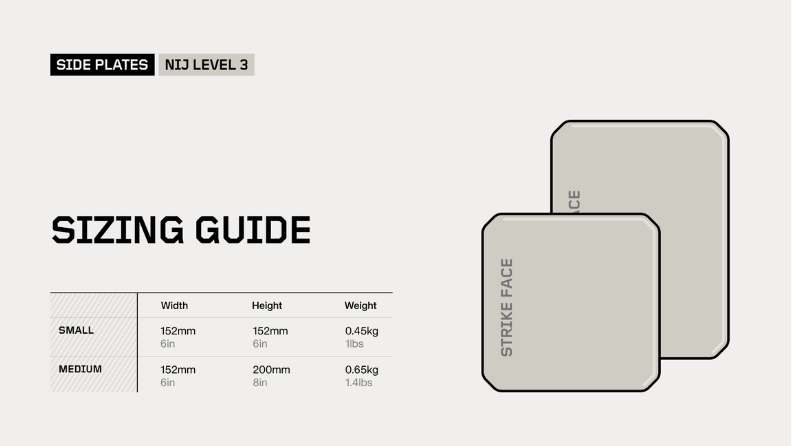 |
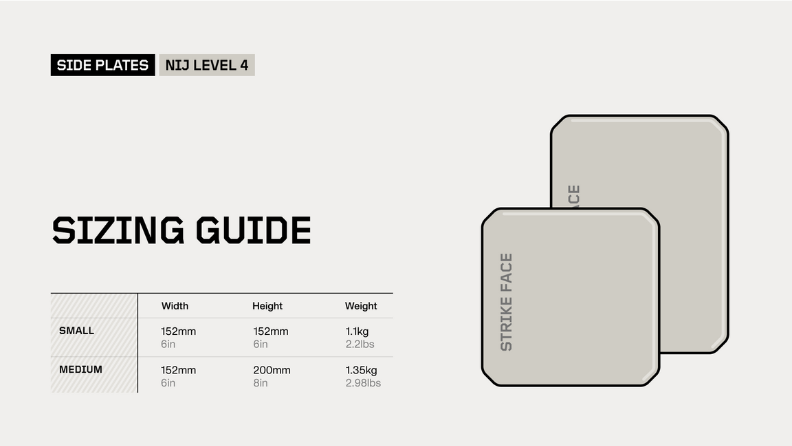 |
By following the 3 steps in our guide, you can find the perfect hard armor plate that balances protection, comfort, and mobility. If you have any questions, feel free to contact [email protected] for advice on selecting the right armor plate for your needs.
Final tips for best fit and protection
-
- Make sure that the top of the front plate sits at the base of your collarbone.
- If the plate extends too far down, it may interfere with mobility and comfort.
- Remember that comfort is key – if it’s too heavy or uncomfortable, you may hesitate to wear it in real-world scenarios.
- Don’t forget that your armor plates must be compatible with your plate carrier. Make sure to check that the carrier matches the size of your plates. The plate should sit properly in the front and back pockets of the carrier. Always make sure that the fit allows freedom of movement without excessive shifting.